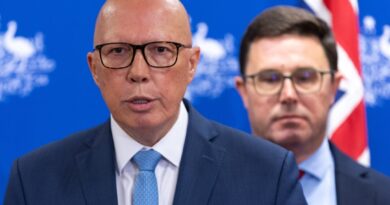Greens Promise $2 Billion to Fund ‘Free’ Public Education
The Greens plan to fund their education reform by taxing large corporations.
The Australian Greens have unveiled a strategy to eliminate fees in public schools, providing families with a yearly $800 (US$501) payment per child to cover expenses at the beginning of the school year.
They aim to allocate an extra $2.4 billion to public schools to remove fees as part of their initiative to ease financial burdens on working families.
Greens Leader Adam Bandt MP highlighted that parents are spending substantial amounts on “voluntary” fees, uniforms, and other costs while a significant portion of large corporations do not pay taxes.
To support this education reform, the Greens have proposed the Big Corporations Tax, which they anticipate will generate $514 billion over the next ten years.
This funding would not only cover free public schooling but also finance additional programs like dental and mental health services under Medicare, capping rent increases, and introducing low-rate mortgages.
They reference a 20.58 percent increase in school fees and contributions from 2021 to 2022 as the basis for their intervention.
It is estimated that families of primary school students spend about $694 each year on supplies, while secondary school expenses amount to $1,149 per student.
With the potential for a minority government, the Greens are positioning their education policy as a critical bargaining tool in post-election discussions.
Budget Challenges Amid Growing Spending
The Greens’ proposal aligns with current economic challenges.
The most recent Mid-Year Economic and Fiscal Outlook (MYEFO) forecasts Australia’s deficit to grow to $143.9 billion over the next four years—$21.8 billion higher than previous estimates—raising concerns about escalating government debt, expected to surpass $1 trillion by the 2025–26 fiscal year.
Data from the Australian Bureau of Statistics (ABS) indicates government spending has averaged $55.1 billion annually since 1959.
However, in the third quarter of 2024, government spending in Australia surged to a record $146.39 billion, up from $144.37 billion in the previous quarter.
Calls for Economic Reform
John Humphreys, chief economist at the Australian Taxpayers’ Alliance, attributed the escalating deficit to “discretionary spending,” including measures such as cutting $3 billion in student debt.
“The projected deficit of $47 billion for 2025–26 is unsustainable, especially given the substantial tax revenue increases by the government in recent years,” Humphreys noted.
Economists caution that without significant economic reforms, Australia may face prolonged stagnation.
Humphreys advocates for major tax cuts to boost productivity, citing a per-capita recession lasting seven consecutive quarters.
Graham Young, Executive Director of the Australian Institute for Progress, underscores the need to reverse policies expanding government intervention at the expense of private-sector growth.
“Without decisive action to curb spending and stabilize the economy, we risk leaving a legacy of perpetual debt and low productivity to future generations,” Young emphasized.
The Greens’ proposal to finance free public education by increasing taxes on large enterprises is anticipated to undergo scrutiny as economic analysts continue to discuss the balance between public spending and economic sustainability.





